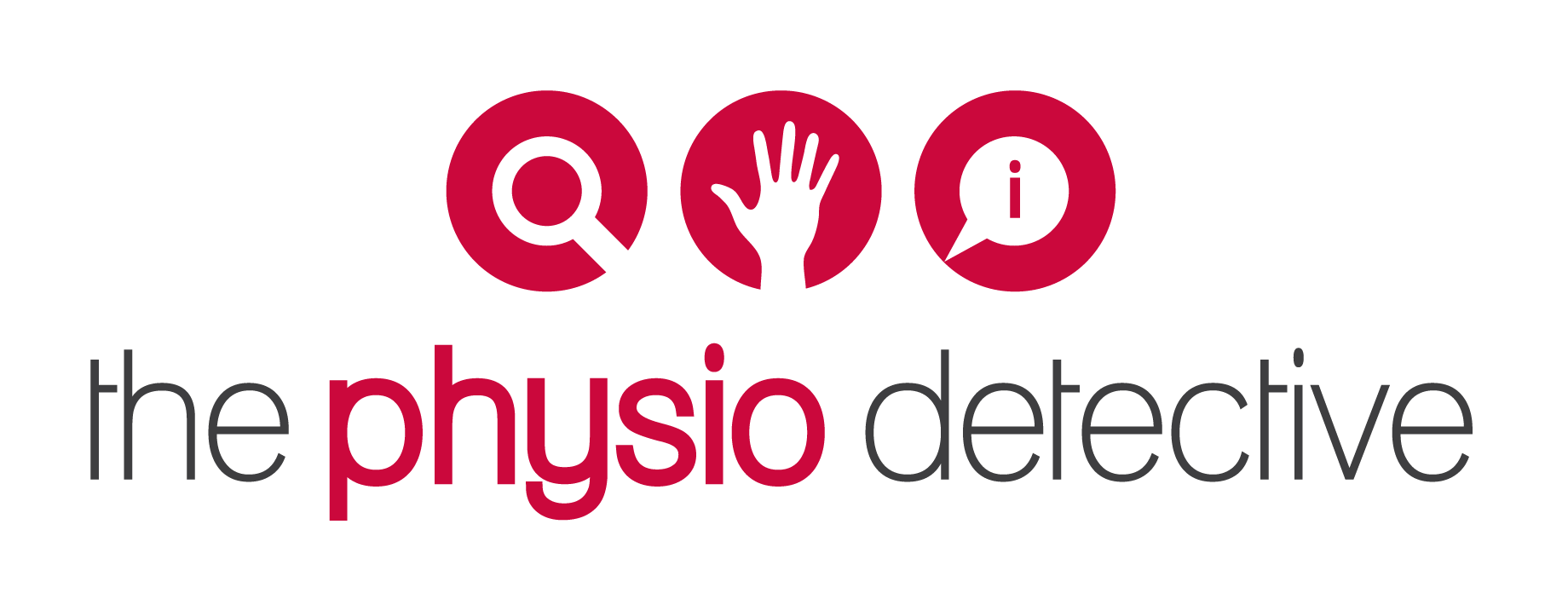How to train through injury…yes, you can usually keep training!
I see a lot of athletes - both high level and recreational - as part of the work I do. To develop your body, you need to overload your body - the old SAID principle...Specific Adaptation to Imposed Demands. If you don't believe me, check out the photos of how different sports will cause your body to develop differently (or at least choose different body types) here. But it is a fine line between enough stimulus to develop and too much load which will cause breakdown and injury...
...and injuries occur. They always have, they always will. Nothing is without risk. I just like to minimize the risks as much as possible.
The following blog post is about how I like to minimize the risks of re-injury for my patients who are injured.
How long will it take to get better?
I thought I would get this out of the way early. Everyone wants to know how long it will take to heal their injury so they can get back to "normal" training... I have thought long and hard about this and I have come to this conclusion...
If you train the way I will teach you to train, you will get better in time to get back to your previous loads, you will probably go past your previous PBs and you will have a decreased risk of re-injury.
It doesn't really answer the question, does it? So I found this little website which I think neatly sums up most soft tissue injuries...
Workcover South Australia Recovery Timeframes For Common Injury Types
So when a Physical Therapist tells you that it will take about 6 weeks to heal, they aren't just pulling a number from the air, it really is the amount of time it takes for the whole healing process to get to a point where it is essentially "normal". Remodelling and fine-tuning of the scar still occurs but the scar is usually of a sufficient strength to do "normal" activities.
 So how should I train (or keep training)?
So how should I train (or keep training)?
The general principles I apply are:
- Perfect practice make perfect. It is mechanics, consistency, intensity. Get back to the basics and build a good foundation
- Only choose a load that you can safely perform the movement with...without pain. If you have a shoulder impingement, you might not be able to do overhead squats with a PVC pipe...so do something else. I will explain a little later why.
- Get someone who knows (coach, physio, friend etc) to watch for movement flaws. Now the trouble here is that whilst many people know what looks good, it is the subtle dysfunctions that most people miss. Find someone good - they should be able to reduce your pain basically straight away if your technique is a problem and is corrected.
- Wait for your weaknesses to catch up. Did you ever consider that during your back squat, your butt-wink causes your back to flex too much? Your legs might be strong enough to squat 400lbs but your hip flexibility, and your back stability and strength needs to catch up. So squat perfectly at 375lbs and be patient!
 But I am injured now and "they" tell me I shouldn't train...what do I do?
But I am injured now and "they" tell me I shouldn't train...what do I do?
Firstly (insert all disclaimers here) - you should discuss this blog post and your injury with your health professionals - maybe there is a really good reason why you can't squat yet...like you have a fractured tibia and are not allowed to even walk yet...ok...but if you are allowed to sit down and stand up with some weight on the leg, then damn it, you can do partial air squats to the chair! Go back and read the principles above. Choose a load that is safe! Make sure there is no pain! Don't make things worse!
Consider this if your injury wasn't an "accident" like getting run over, crushed awkwardly in a tackle, or some other event that was essentially out of your control...
Maybe the reason why you got injured in the first place is that you didn't train the way I suggested above
I have to tell you, I do find myself repeating this training program A LOT.
So when you are injured, for example if you have a calf strain and you can't walk normally, I am going to tell you to focus on strict pullups, chin ups, ring dips, bench press, etc. Perfect form of course! When you can walk properly in a few days, you start doing partial squats as far as you can with perfect form, keeping the weight even. You only do what you can do safely and without pain. Remember that it will take 3-6 weeks to heal properly but in that time, you have hundreds of reps of perfect form you can use to change your motor patterns...and the better technique during that time will heal your injury in a way that will better enable you to maintain good form during your movements.
Maybe a better way to explain it is to explain how my consultations usually go...
- Subjective History - getting to know what is going on and what you would like me to help you with
- Objective Examination - watch you move and do all the tests for your joints, muscles and nerves I need to do. I also watch your technique on the movements that hurt.
- Assessment and Treatment - Basically, I form a hypothesis of what is going on and I try to help you by changing something WITHOUT me "doing" something to you - I want you to see that you can better simply by changing the way you train - sometimes I actually have to intervene...this is your typical Physio (PT) stuff - joint, muscle and nerve work. The most important part of the assessment and treatment is to prove to you that you feel better and stronger...which prove my hypotheses.
- Recommendations - I explain and show using videos, pictures and mirrors how you currently move and how my way is better for you...it is better because you don't get pain and are stronger and I demonstrate that then and there. I then recommend exercises, stretches and ask you to discuss your training with your coach so you follow the princples above more closely.
- Follow-up - The more serious the problem, the more follow-up you need simply because some of the progressions back to "normal" movement can be difficult and take their time.
So you see, how you should train is based on what your goals are, what your problems are, how you need to correct your technique, how to improve your flexibility, mobility, stability, strength and mind. That is what a good Physio assessment should give you.
Technique really is the key
I know this doesn't sound sexy but it is true. Technique is a combination of mental toughness, body awareness and coordination of all the muscles that are required to do their job.
EVERYONE has either a flexibility, mobility, stability, neural, strength or mental deficit that causes a limit in their performance.
It is up to you to be patient for the muscle groups that are not quite strong enough to maintain perfect technique. It is up to you to be patient for the stability and coordination required to improve - your brain needs to learn those patterns. It is up to you wait for your tendons, ligaments/capsule to develop increased capacity because they can be as long as 10 times slower to develop compared to muscle. It is up to you to do the accessory work you need to get stronger in your weak areas.
So when you got injured, it was likely that you were not ready for that load in one part of your body and other parts of the body compensated to take that load. Something got overloaded past its straining point and you got an injury. Sometimes it happens picking up the soap in the shower. Sometimes it happens for no reason at all. But sometimes, in fact more often than not, it happens when you push yourself when you are exhausted.
So are you saying that you shouldn't "fight" for that final rep?
Don't get me wrong, there is a time and a place to "fight" for that last rep or that new 1RM...but that is not EVERY rep. That is not every session. That is not every day. Those "fights" come with an increased risk of injury. We want to be prepared for those "fights", be prepared to take that risk because we know if we have been training well, recovering well and progressing well, our body will be at its best to take that next step. Progressive overload is essential to improvements in strength...just be smart about how you do it and when to "fight" and when to drop the bar. If the majority of your training is technically sound, then you will be better prepared for those tough challenges...and likely to meet the challenge with better technique 🙂
Does it really work?
Of course it does!
I can show you videos of patients who have had pain in their shoulders for years suddenly don't get pain...within minutes. I have had athletes who had knee surgery who are back to the same weights by 6 weeks and surpassing their previous maxes. I have "saved" people from shoulder, back, knee, hip surgery because of the changes in technique and developing their flexibility, stability, mobility and strength.
I had to swallow my ego with my back squats - my mid back is not strong enough even though my legs were. So I decided to take my own medicine and scaled back to 80kg back squats...my 1RM was 120kg. Then, I was hard on myself. I forced my self to be different and do perfect reps each time. I recently got 125kg on a 1RM back squat when doing the CrossFit Total...a new PB on my deadlift too at 179.5kg (I was in the USA so 395lbs) and equaled my strict press PB...2 weeks later I improved that by 5kg.
 So what should you do if you get injured?
So what should you do if you get injured?
- Keep training - Just be smart about the movements and the load. If you have trouble working out what to do, ask your coaches. If that doesn't work, maybe you need to see someone like me. When in doubt, follow what you doctor tells you to do!
- Perfect practice - This will optimize your healing and let you get better!
- Be patient - Take a long-term approach to where you want to be and make realistic medium and short-term goals to get there. Be realistic and put the work in to bring your weaknesses (flexibility, mobility, stability, coordination, mindset etc) in line with the rest of your strengths. You are in a good place when everything is right and you just have to get a little faster or a little stronger 🙂
- Ask for help - Most of the athletes I help KNOW what they should be doing and can identify it on others...but they don't they need it themselves. That includes me. I don't have eyes outside my body. I need a coach! If you don't have a coach or a friend, then get Coach's Eye and share the link with me...I help people around the world this way all the time.
- When in doubt, see a GOOD physio - A good physio is your secret weapon. We are your legal performance enhancers. We are your body's mechanic and tune-up guy - we optimize your body to complete the goals you set. If your physio can't demonstrate that you will be better doing it their way, then find someone else or help them work it out!








Great article. Just what I needed to read, as I currently have a shoulder injury that has now lasted 3 weeks. Seeing Physio but was getting to the point of thinking that maybe it couldn’t be fixed. But after reading your article I now accept that it may take 6+ weeks and that I need to be patient and keep up the physio’s advice and train for the moment differently.
Exactly. For all shoulder injuries in general, I want my patients to learn…
1. How to centre the humeral head
2. How to set the scapula flat to the chest wall, with some upward rotation – NOT retraction and depression
3. How to test if their neck or thorax or low back or pelvis is contributing to the problem
4. How to move efficiently – no pain
5. Strict strength – pull ups, ring dips, strict press, push ups etc
Ask your Physio to show you how to do the above 🙂
Thanks for the article! Really like the last part: “…We are your legal performance enhancers. We are your body’s mechanic and tune-up guy”.
I was wondering what you do when you say: “2. How to set the scapula flat to the chest wall, with some upward rotation – NOT retraction and depression”? Could you explain this a little more?
Thanks Lynn.
Scapula setting is part of the “art” of Physio. There isn’t any right it wrong way so long as the general principles are right.
The general principles are:
1. Maximize the surface area contact on the thorax – no winging
2. Maintain and upward rotation of the glenloid fossa during loading
Most people are cued with retraction and depression of the scapula for better posture…that is basically wrong for most people – not in theory…but because in practice, people over retract and over depress.
I have a blog post with YouTube video about this somewhere – my friend Ben was the willing victim. I will try to find the video for you 🙂
Tell me what your thoughts are…
Found it!
http://youtu.be/Ac0DOoml5qo
Thanks for the video Antony!
Great write up Anthony. Patience has been my keyword for the past 3-4 months with a suspected torn glute medius. Still slightly reoccurring (after clean and jerk an squats) but working around it and focussing on other areas has kept it fun.
Thanks for that. Why is your glut med “suspected” to be torn? An MRI would confirm that.
If you are getting that kind of injury, I would suspect you are not centering the femoral head in the acetabulum during movement. You may have a tight posterior hip capsule or short or tight or over active deep hip external rotators. This can cause your hip flexors to feel tight and your TFL to overwork and so your glut medius changes the amount it works. But all of that is a guess about you…but it is a common story.
Keep being patient and improve your technique. Find someone who understands what I wrote above and learn how to retrain your movement. It isn’t hard on your body to do, it is hard on the brain…
Cheers!
Thanks Anthony! Explains why I feel some pain from the greater trochanter and down the TFL. Compensating perhaps? Lots to work on, thanks again!
It usually is a compensation that causes that TFL and ITB to flare up. Again, learn how to fix that and things will improve.
I help this kind of problem all the time. It is a matter of working out what is wrong and teaching you what to do. If you get good help and do your exercises properly, it doesn’t actually take too long for most people – up to 6-12 weeks conservatively. I have had some better in less than 1-2 and some more than 6 months so it really depends on what your problem is 🙂 let me know how you get on 🙂
Very good article. I had a lis franc injury which they put screws but it became arthritis and got a mid foot fusion. I was able to walk between the surgeries with my boot and without. I started working more on my technique and noticed a big difference. No I couldnt lift really heavy weight but I was happy with the lifts I. But yes I had to leave my ego at the door. Now I have to wait another 6 to 8 weeks to start again but im excited 🙂
Hi Claudia. Oh man, that’s terrible. I am glad you are still training though. You can still do a lot. Be patient and work on your strict strength. The foot will need some specific strengthening when the time is right 🙂 let me know how you go 🙂
Thank u Antony I sure will
Pingback : Therapy Reads 11/16/14 | ActivePTblog
You can keep training but you want to make sure that you are collaborating with a professional to ensure that you are not causing further damage that may be permanent.
Hi anthony, well I finally got the ok from the dr to start working out again just no high impact like running or jumping. And so far so.good very sore of course.Im able to squat pretty good just nees some strength on the leg. I would just love some input on what I can do to strengthen my leg and bring the range of motion back on my ankle. Thank you.